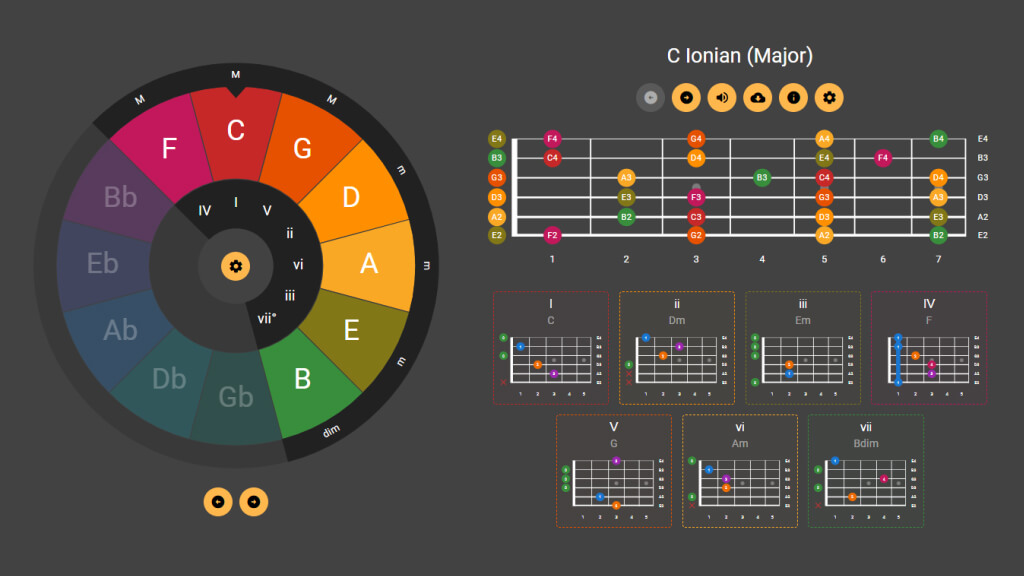Formula and Intervals of the C# Locrian #2 Scale
Degree formula: 1 — 2 — b3 — 4 — b5 — b6 — b7. Interval pattern between adjacent degrees: 2 — 1 — 2 — 1 — 2 — 2 — 2. The scale includes the following notes:
- Db — tonic, the main anchor of the mode.
- Eb — gentle melodic extension and natural upward step.
- E — minor third, lyrical tone and soft drama.
- Gb — quartal spice, best separated from 3 by voice leading.
- G — diminished fifth, avoid in bass for transparency.
- A — minor sixth, soft pull to 5 and warm tone.
- B — dominant pull toward tonic, typical of Mixolydian.
Together these degrees form the core of the C# Locrian #2 mode and define its musical character.
Chords within the C# Locrian #2 Scale
Below are the basic diatonic chords that naturally occur on each degree. Use them as a palette for your progressions, keep the bass stable, and highlight color tones in the upper voice.
- Dbdim — 1
- Ebdim — 2
- Em — b3
- Gbm — 4
- Gaug — b5
- A — b6
- B — b7
This set forms a solid modal framework: combine triads and seventh chords, add 9/11/13 for color, and separate 3rds from 11ths for cleaner harmony.
Alternative Names of the C# Locrian #2 Scale
This mode may appear under other names:
- C# Locrian #2 (for ii m7b5)
All variations point to the same modal structure.
How to Use the C# Locrian #2 Scale
Natural 2 softens the mode and clarifies iiø7. Keep b5 above bass. Maintain clean top and avoid heavy low register.
Conclusion
C# Locrian #2 is a recognizable mode with clear logic of use. Study the formula and intervals, keep color tones in the top voice, build diatonic chords, and try integrating the mode into your own progressions — this way you’ll develop a confident and expressive sound faster.




![[Spider-Man] Hero — Nickelback (Fingerstyle Guitar + Vocal Cover)](https://dmitrypimonov.com/api/files/2f5fdfaf-b3e3-4697-8990-512932d05088/content/1920/1080/medium.jpg)








